Predatori Predati
Street vendor of both writing ink and rat poison were a common sight in Venice.
This is not the only image of a combined trade in ink and rat poison.
Source: Gli abiti de veneziani di quasi ogni età con diligenza raccolti e dipinti nel secolo XVIII, by Giovanni Grevembroch (1731–1807), which in four volumes contains over six hundred watercolours of how Venetians dressed in the 1700s.
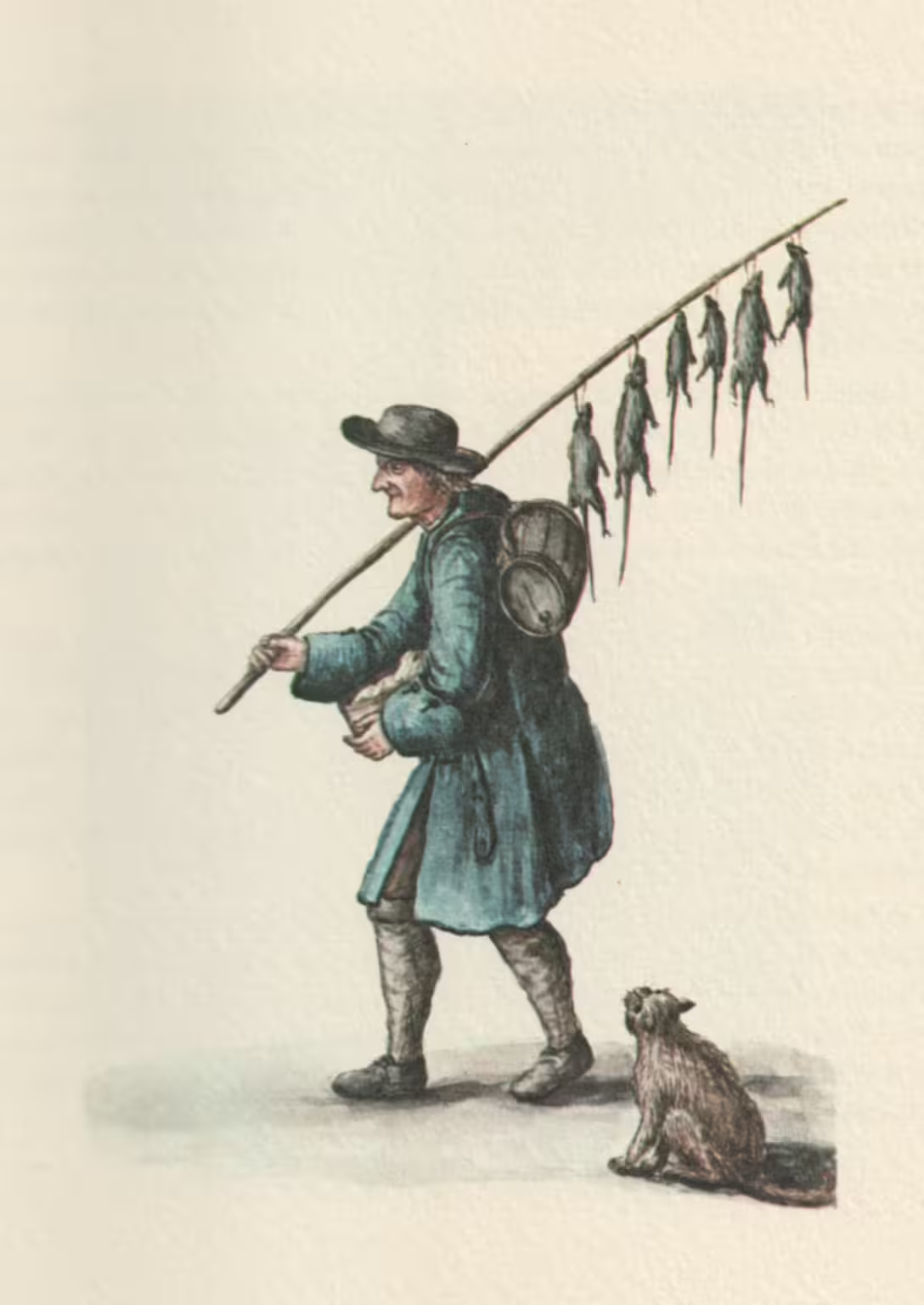
Prayed upon Predators
No city is more subject to being inconvenienced by rats than those which are situated on the seashores, and facilitated by commerce, while the frequency of ships that land on the shores carry away abundantly, in addition to the merchandise, a prodigious quality of such sordid and filthy animals. In order to repair in some way their voracity, various tricks are used to catch and kill them, and from time to time, in Venice there appears from other regions someone who offers a bait of tasty food, but of deadly digestion.
In our age we saw a Bergamasco, who profited greatly from his own secret. He was also a relative of Francesco Lazarini, a rich dealer of medicinal herbs and spices1 on the Rialto Bridge, who became disgusted whenever he saw or heard his filthy and vile Kinsman.
The great wonders observed in these Beasts were described by the Abbot Picinelli, by Eusebio Nierembergh, and by the Jesuit Rossignoli, who assure us that their cunning most of the time surpasses any human deceit.
This extensive reward is given to Jacopo Casarini, who, returning from London some time ago, told us that he had met there an Englishman paid by the principal Lords for the sole task of flushing out Rats from their Palaces by means of a very tasty and lethal dish.
To the Jew Moise Levantino, Fabricator of Ink,2 and Sealing Wax, sold industriously throughout the City.
Translator’s notes
- The literal translation of droghe would be drugs, but that word has very different connotations today. The meaning of the word in the times of Grevembroch was that of spices and herbs used for the production of medicines and perfumes. ↩︎
- The connection between writing ink and rat poison also appears in Inchiostro — vendor of ink and rat poison — by Gaetano Zompini. ↩︎
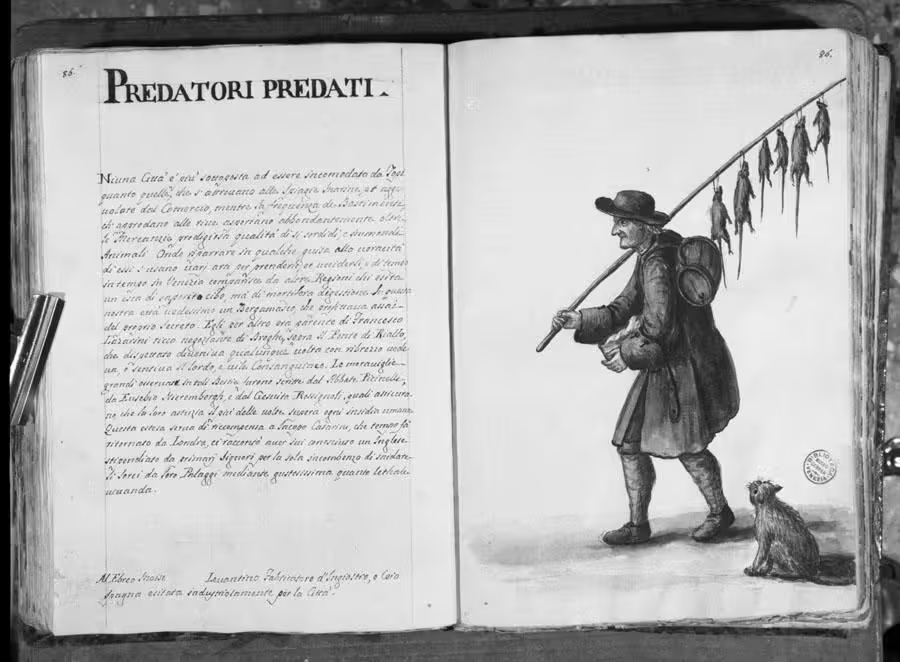
Original Italian text
Predatori Predati
Niuna Città è più sottoposta ad essere incomodata da Topi quanto quelle, che s’attrovano nelle Spiagie Marine, et aggevolate dal Comercio, mentre la frequenza de Bastimenti, ch’approdano alle rive asportano abbondantemente oltre le Mercanzie prodigiosa qualità di si sordidi, e immondi Animali. Onde riparrare in qualche guisa alla voracità di essi s’usano varj arti per prenderli, et ucciderli, e di tempo in tempo in Venezia comparisce da altre Regioni chi esita un esca di saporito cibo, mà di mortifera digestione.
In questa nostra ettà vedessimo un Bergamasco, che profittava assai del proprio Secreto. Egli per altro era parente di Francesco Lazarini ricco negoziante di Droghe, sopra il Ponte di Rialto, che dispettato diveniva qualunque volta con ribrezzo vedeva, o sentiva il lordo, e vile Consanguineo.
Le meraviglie grandi osservate in tali Bestie furono scritte dal Abbate Picinelli, da Eusebio Nierembergh, e dal Gesuita Rossignoli, quali assicurano, che la loro astuzia il più delle volte supera ogni insidia umana.
Questa estesa serva di riccompensa a Jacopo Casarini, che tempo fa ritornato da Londra, ci raccontò aver ivi conosciuto un Inglese stipendiato da primarj Signori per la sola incombenza di snidare li Sorci da loro Palaggi mediante gustosissima quanto lethale vivanda.
Al Ebreo Moise Levantino Fabricatore d’Ingiostro, e Cera Spagna esitata industriosamente per la Città.
Grevembroch (1981), vol. 4, p. 86.
Related articles
- Gli abiti de veneziani — by Giovanni Grevembroch
- Inchiostro — vendor of ink and rat poison — by Gaetano Zompini
- Ink and Rat Poison
Bibliography
- Grevembroch, Giovanni. Gli abiti de veneziani di quasi ogni eta con diligenza raccolti e dipinti nel secolo XVIII, orig. c. 1754. Venezia, Filippi Editore, 1981. [more]

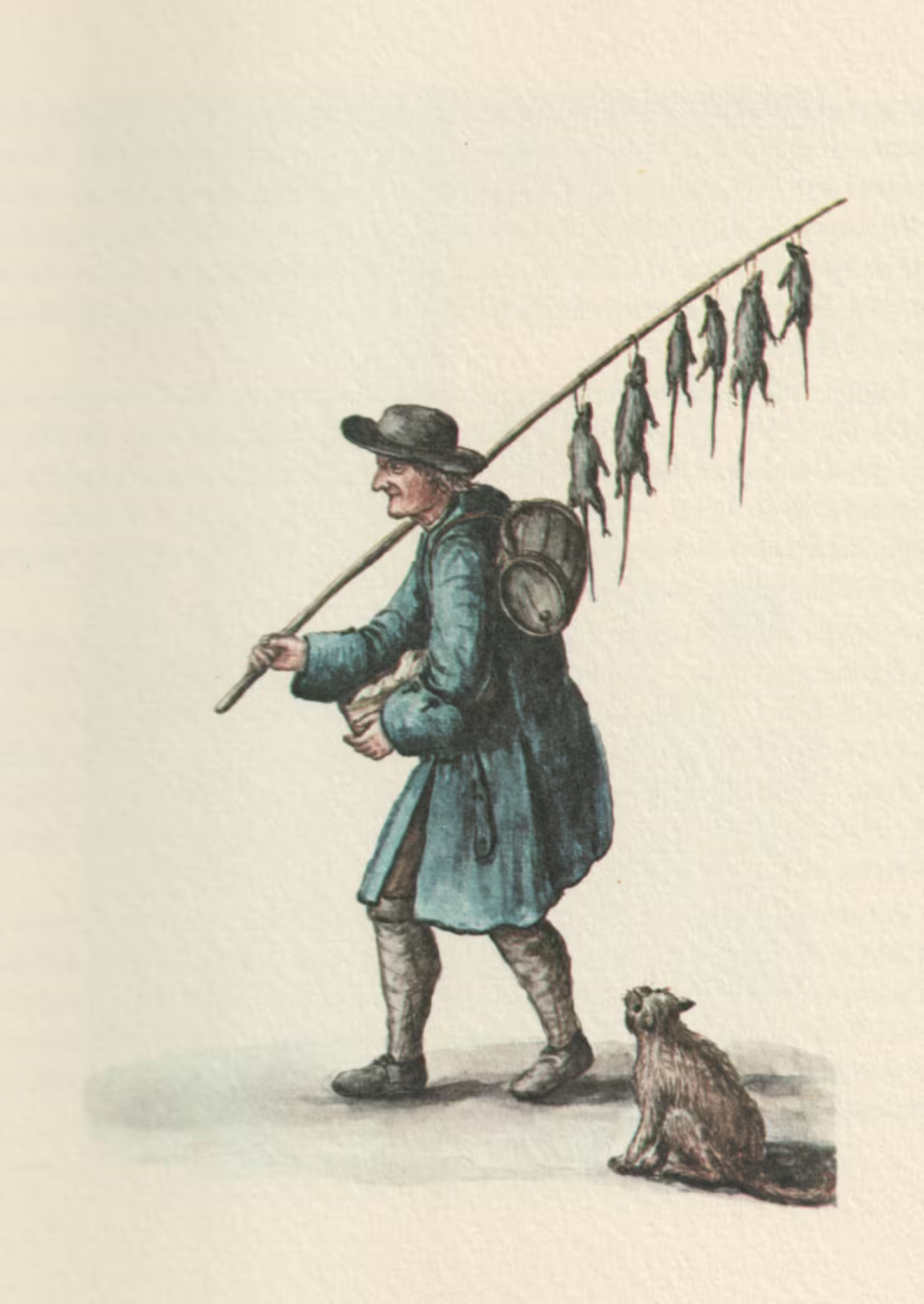
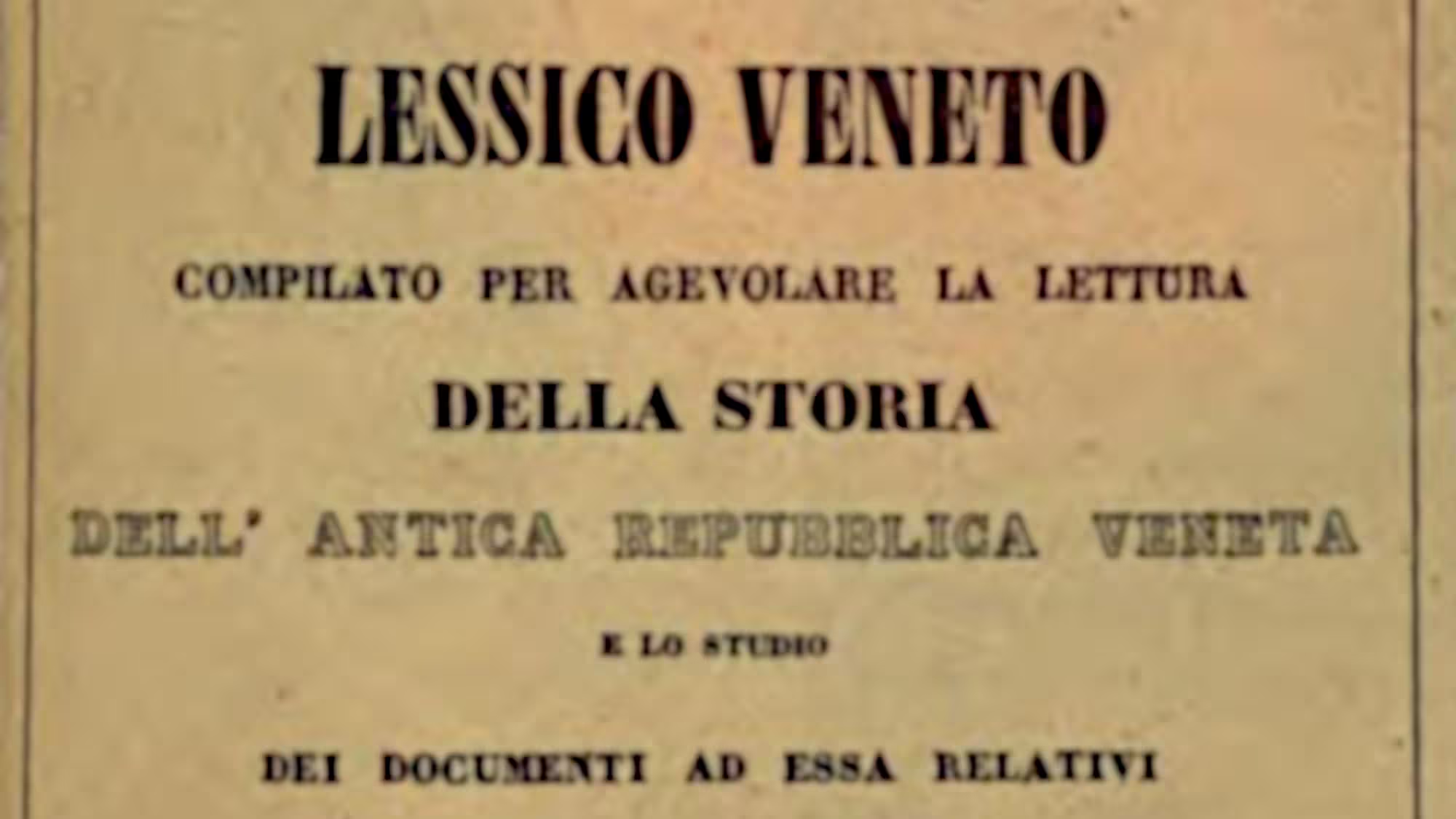
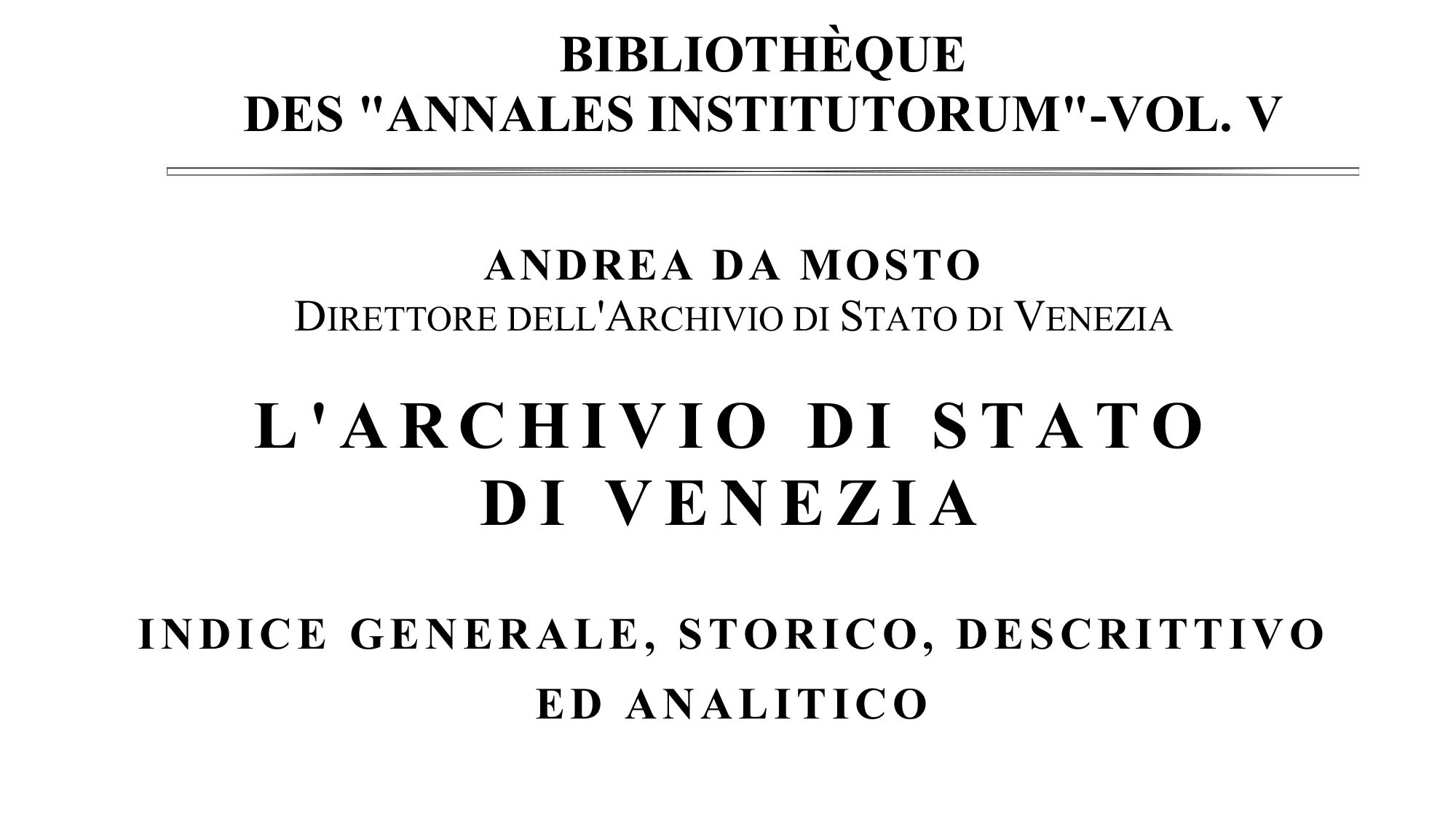
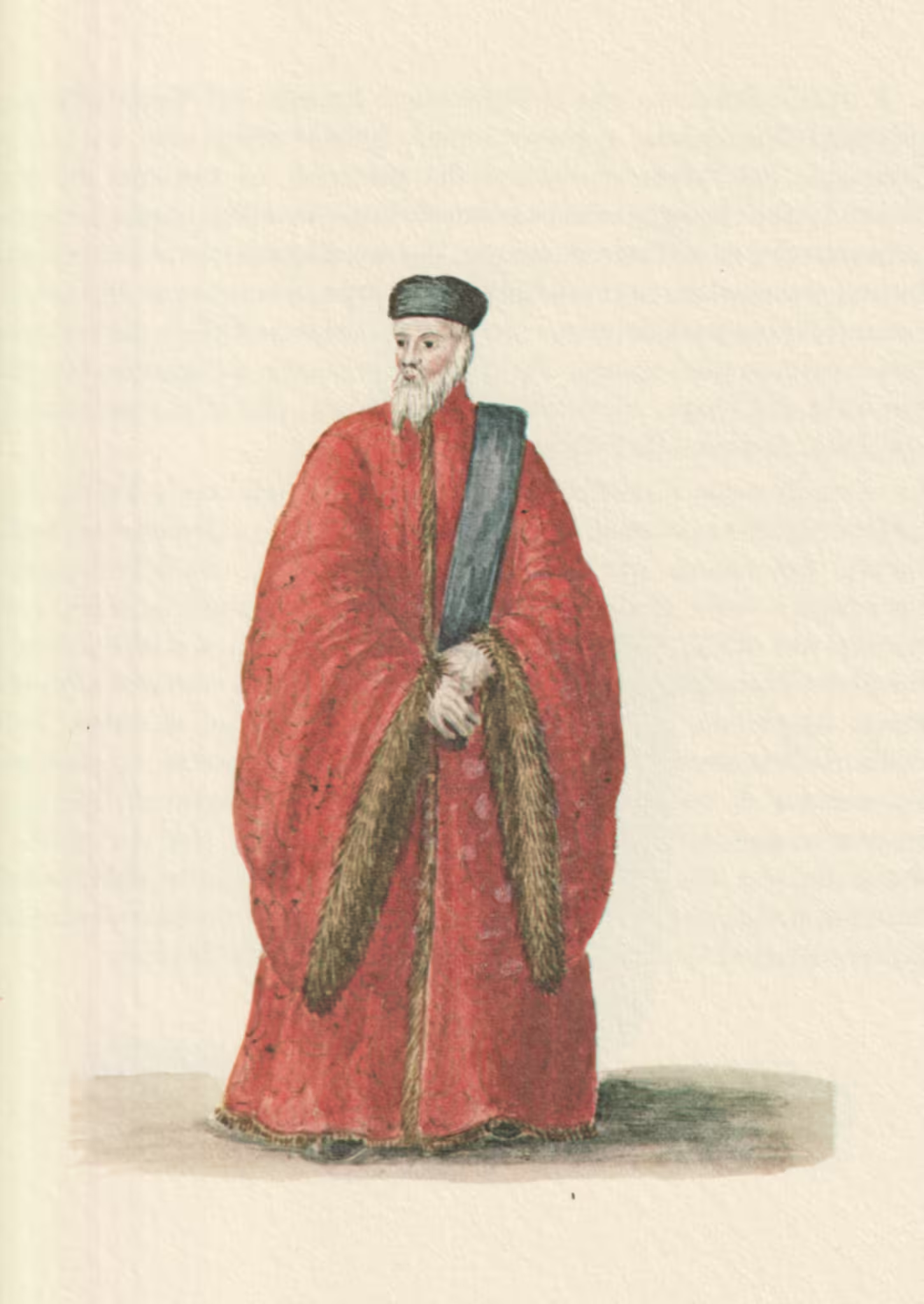
Leave a Reply